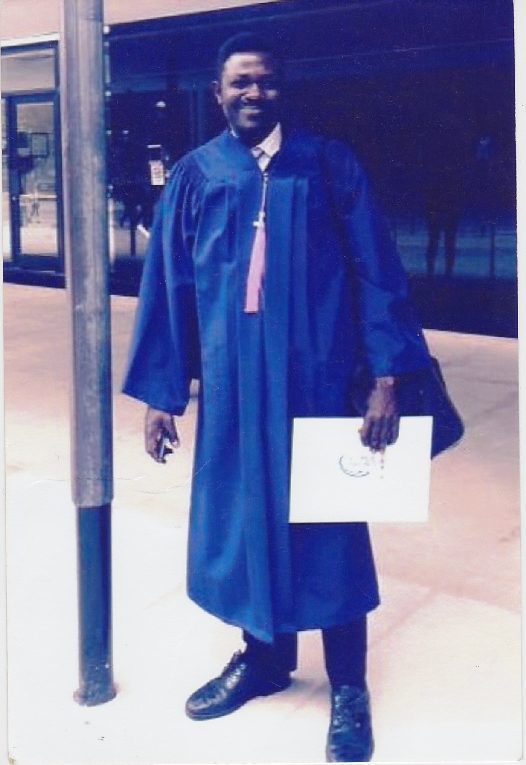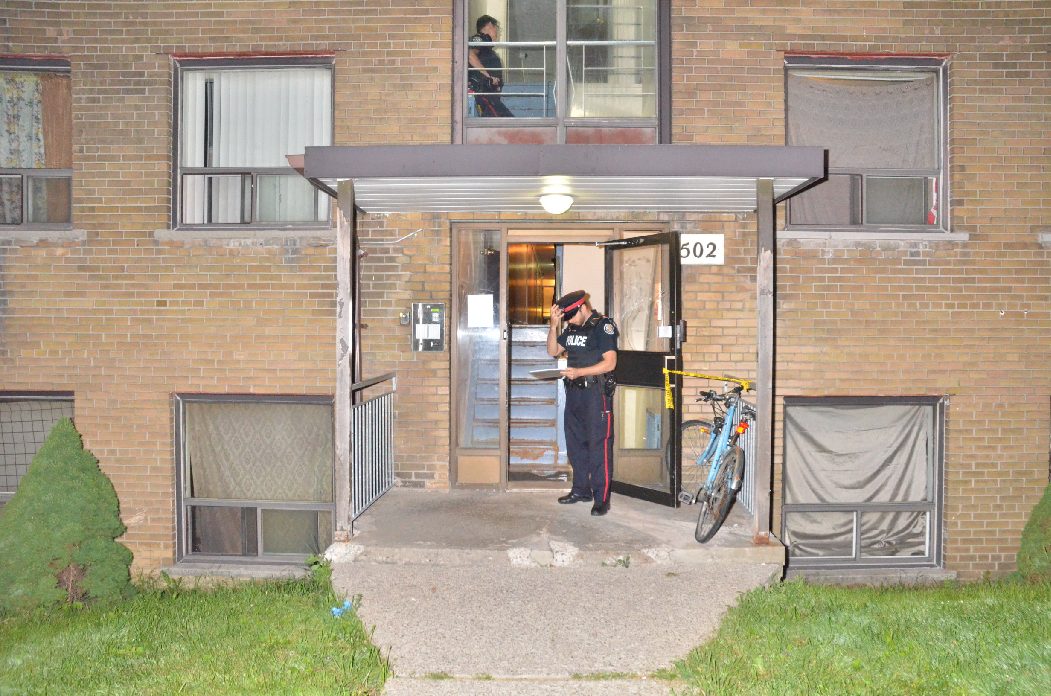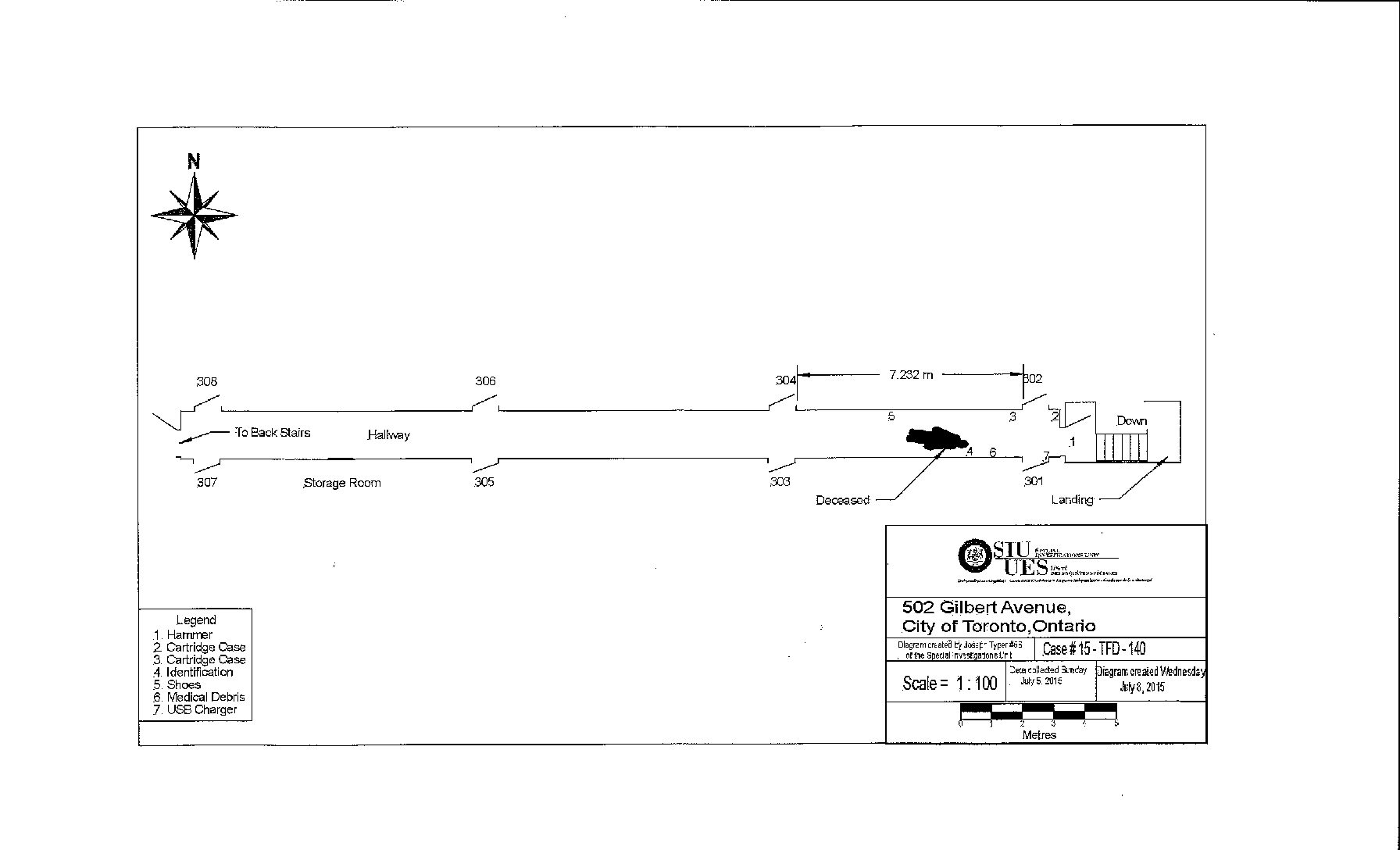Jury members at the centre of a long-anticipated coroner’s inquest into the death of a black man who was fatally shot by Toronto police were cautioned to stay neutral until the end of the proceedings, despite the “strong feelings” that are sure to arise in the weeks to come. Coroner’s inquests steer clear of assigning blame, but this one will probe the competing narratives around what happened — that the officers were deemed to be “legally justified” in their actions by the Special Investigations Unit, which declined to charge them, while eyewitness accounts obtained by the Toronto Star suggest Loku had calmed down by the time they had arrived and posed no threat.It will also, crucially, deliver something activists have been calling on for two years: the identities of the officers involved, and whatever footage is available of the incident.“Andrew was by all accounts a warm, kind and gentle man,” Jonathan Shime said in court on Monday, on behalf of Loku’s family. “He only hoped for a better and more peaceful life for him, his children… his country.”The inquest is expected to touch on issues like implicit bias, the police’s interactions with people who suffer from mental illnesses, as well as the police’s use of force.Ten organizations and individuals are party to the Loku inquest, including his family; Across Boundaries, an organization that provides assistance to racialized people with mental health issues in the GTA, which worked closely with Loku directly for years; the Toronto Police Association; the Toronto Police Services Board, the Black Action Defense Committee; as well as counsel for the chief of police and the two officers in question.Michael Blain, who is assisting the coroner and representing the public interest in the inquest, kicked off the morning’s proceedings by giving the jury a rundown of who Loku was, the events leading up to his death, and what they should expect to hear in the coming weeks in court.Loku, a father of five children aged 12 to 20, originally from South Sudan, was captured by rebels during the country’s brutal civil war. He was beaten and tortured for a month for government information, before being left for dead — it took him three months in hospital to recover from the physical abuse, the court heard. Loku fled to Uganda, where he remained for several years before coming to Canada as a refugee in 2004.
Coroner’s inquests steer clear of assigning blame, but this one will probe the competing narratives around what happened — that the officers were deemed to be “legally justified” in their actions by the Special Investigations Unit, which declined to charge them, while eyewitness accounts obtained by the Toronto Star suggest Loku had calmed down by the time they had arrived and posed no threat.It will also, crucially, deliver something activists have been calling on for two years: the identities of the officers involved, and whatever footage is available of the incident.“Andrew was by all accounts a warm, kind and gentle man,” Jonathan Shime said in court on Monday, on behalf of Loku’s family. “He only hoped for a better and more peaceful life for him, his children… his country.”The inquest is expected to touch on issues like implicit bias, the police’s interactions with people who suffer from mental illnesses, as well as the police’s use of force.Ten organizations and individuals are party to the Loku inquest, including his family; Across Boundaries, an organization that provides assistance to racialized people with mental health issues in the GTA, which worked closely with Loku directly for years; the Toronto Police Association; the Toronto Police Services Board, the Black Action Defense Committee; as well as counsel for the chief of police and the two officers in question.Michael Blain, who is assisting the coroner and representing the public interest in the inquest, kicked off the morning’s proceedings by giving the jury a rundown of who Loku was, the events leading up to his death, and what they should expect to hear in the coming weeks in court.Loku, a father of five children aged 12 to 20, originally from South Sudan, was captured by rebels during the country’s brutal civil war. He was beaten and tortured for a month for government information, before being left for dead — it took him three months in hospital to recover from the physical abuse, the court heard. Loku fled to Uganda, where he remained for several years before coming to Canada as a refugee in 2004. Shortly after arriving, Loku was connected with the Canadian Mental Health Association, which provided him with housing—it was the CMHA that was responsible for providing Loku with the unit he was in at 502 Gilbert Avenue, where he died. He’d been diagnosed with PTSD and depression.With the help of Across Boundaries, he enrolled in a construction craft program at George Brown College and graduated a few weeks before his death.For several years, his mental health was stable and Loku was not on any medication. But things seemed to have taken a turn for the worse after Loku visited his family in Africa, and learned it would not be financially feasible to bring his family over to Canada.
Shortly after arriving, Loku was connected with the Canadian Mental Health Association, which provided him with housing—it was the CMHA that was responsible for providing Loku with the unit he was in at 502 Gilbert Avenue, where he died. He’d been diagnosed with PTSD and depression.With the help of Across Boundaries, he enrolled in a construction craft program at George Brown College and graduated a few weeks before his death.For several years, his mental health was stable and Loku was not on any medication. But things seemed to have taken a turn for the worse after Loku visited his family in Africa, and learned it would not be financially feasible to bring his family over to Canada. Around midnight, a few minutes after Loku was dropped back to the building by police, a young woman who lived in the apartment above him and her friend said they knocked on his door after hearing loud banging coming from downstairs. After waiting less than a minute, they went up to tell the woman’s mother, who also lived in the apartment. As the mother opened the door to confront Loku herself, he was standing there, with a hammer, the court heard. The mother recalls trying to grab hold of Loku’s arms, but not what was said during the interaction. Her daughter, however, said Loku had threatened to kill her, prompting her friend to call 9-1-1.During the 9-1-1 call, which will be played for the jury, the friend is heard saying that someone is threatening to attack her friend and her friend’s mother, and that he was holding the door so they couldn’t close it. Blain described screaming in the background of the call before police arrive and then the sound of shots being fired.“They each feared the man was going to use the hammer to harm one of them,” said Blain. “Each of them decided they’d have to use their gun, but only one did.”
Around midnight, a few minutes after Loku was dropped back to the building by police, a young woman who lived in the apartment above him and her friend said they knocked on his door after hearing loud banging coming from downstairs. After waiting less than a minute, they went up to tell the woman’s mother, who also lived in the apartment. As the mother opened the door to confront Loku herself, he was standing there, with a hammer, the court heard. The mother recalls trying to grab hold of Loku’s arms, but not what was said during the interaction. Her daughter, however, said Loku had threatened to kill her, prompting her friend to call 9-1-1.During the 9-1-1 call, which will be played for the jury, the friend is heard saying that someone is threatening to attack her friend and her friend’s mother, and that he was holding the door so they couldn’t close it. Blain described screaming in the background of the call before police arrive and then the sound of shots being fired.“They each feared the man was going to use the hammer to harm one of them,” said Blain. “Each of them decided they’d have to use their gun, but only one did.” But eyewitnesses have offered a very different version of events, that was not addressed by the SIU in their report or mentioned at the start of the inquest.A woman named Robin Hicks who lived on the same floor said she came out after hearing the noise in the hall, the Toronto Star reported. She saw Loku at the door of the apartment 302, which was directly above his own — in previous weeks, he had complained to her that the noise from that apartment was keeping him up at night. According to Hicks, Loku was holding a hammer and asking the people inside the apartment to stop making noise. Her friend Ray Lamontagne also saw Loku and said he’d been banging the hammer against the wall, but only to make a point about the noise they were making. They said Loku listened when they told him to leave, and accompanied them back into their apartment, and that he was calm.CMHA executive director Steve Lurie, who saw the footage that was available, told the Star Loku had been moving “very, very slowly” with the hammer at his waist, and that it never looked like he was “going after someone.”The critical moment when Loku was shot was never captured on video.
But eyewitnesses have offered a very different version of events, that was not addressed by the SIU in their report or mentioned at the start of the inquest.A woman named Robin Hicks who lived on the same floor said she came out after hearing the noise in the hall, the Toronto Star reported. She saw Loku at the door of the apartment 302, which was directly above his own — in previous weeks, he had complained to her that the noise from that apartment was keeping him up at night. According to Hicks, Loku was holding a hammer and asking the people inside the apartment to stop making noise. Her friend Ray Lamontagne also saw Loku and said he’d been banging the hammer against the wall, but only to make a point about the noise they were making. They said Loku listened when they told him to leave, and accompanied them back into their apartment, and that he was calm.CMHA executive director Steve Lurie, who saw the footage that was available, told the Star Loku had been moving “very, very slowly” with the hammer at his waist, and that it never looked like he was “going after someone.”The critical moment when Loku was shot was never captured on video.
On Monday morning, five jurors began the three-week process of listening to about 20 witnesses recount the circumstances around Andrew Loku’s death in the summer of 2015. He was shot in his apartment building by one of two Toronto police officers who were responding to a complaint that he was threatening to kill someone while holding a hammer.“He only hoped for a better and more peaceful life for him, his children… his country.”
Advertisement

The proceedings are being overseen by Coroner Dr. John Carlisle, who issued the warning about neutrality despite whatever “strong feelings” might come up in the weeks to come. Jurors may come up with recommendations to prevent similar deaths in the future, which will then be given to the province’s chief coroner and passed along to the relevant people in government.Loku fled to Uganda, where he remained for several years before coming to Canada as a refugee in 2004.
Advertisement

Advertisement
Jackie Patterson, his case worker from Across Boundaries, told the inquest that Loku had lost sleep over it and was feeling depressed and lonely. But she said she’d never seen flashes of anger from Loku and that on no occasion had he acted in a threatening manner.Patterson was also aware that Loku was a recovering alcoholic, but didn’t know he’d started drinking again. Photos taken later showed several crushed cans of beers in the apartment, although it’s not clear how long they’d been there, and the autopsy revealed he’d consumed three times the legal limit of alcohol.Blain, who has gone over the statements from each party, also told the jury they will hear over the next few weeks how the building was equipped with cameras, but that one wasn’t activated at the time Loku was shot and the other was pointed in a way that didn’t capture the incident, for example.According to Blain, the incident wasn’t the first time that night that Loku had been in touch with police — around 11 p.m. that night, police officers found Loku on a central highway in Toronto, riding an e-bike. Loku said the GPS on his phone had directed him to the DVP. Two of the officers who helped stop him that night say they smelled alcohol on him and he seemed confused — they are expected to testify this week, said Blain. The officers seized his e-bike and gave him a ride back to his apartment.Blain described screaming in the background of the call before police arrive and then the sound of shots being fired.
Advertisement

Two cops — a coach officer and a new recruit — arrived on scene around 12:05 a.m. They will testify that Loku started walking towards them, gesturing at them with the hammer, at which point both officers drew their guns and pointed them at him.One officer recalled backing up a step or two and Loku saying something like, “What you gonna do? Come on, shoot me.” The other, however, doesn’t recall Loku saying anything at all. Both say they told Loku to drop his weapon several times as he was walking towards them. Officers will say Loku got within 10 feet of them.“Each of them decided they’d have to use their gun, but only one did.”
Advertisement
